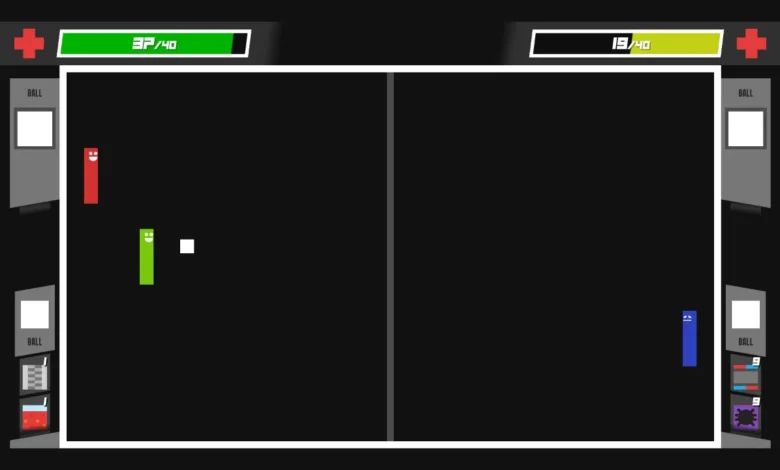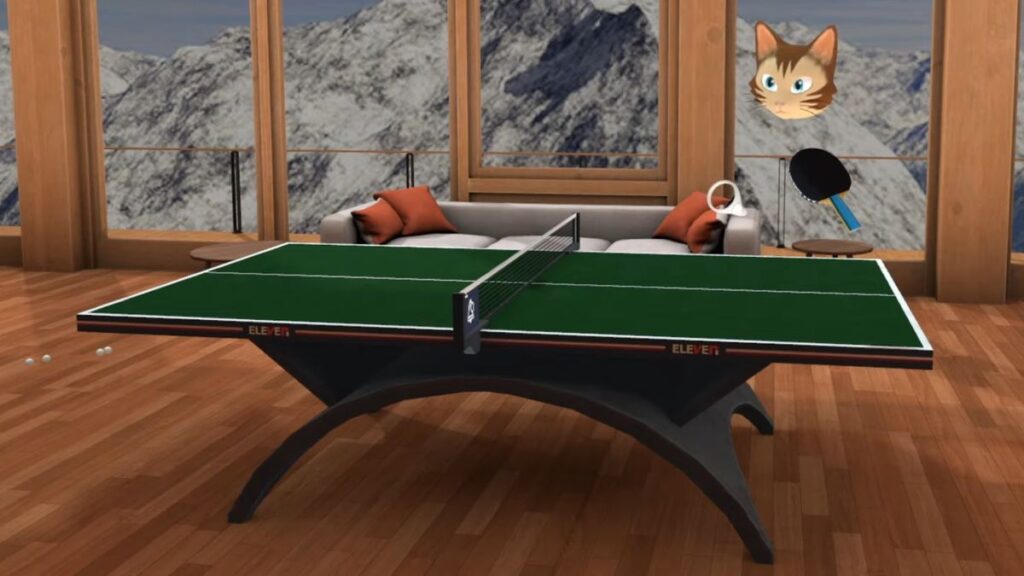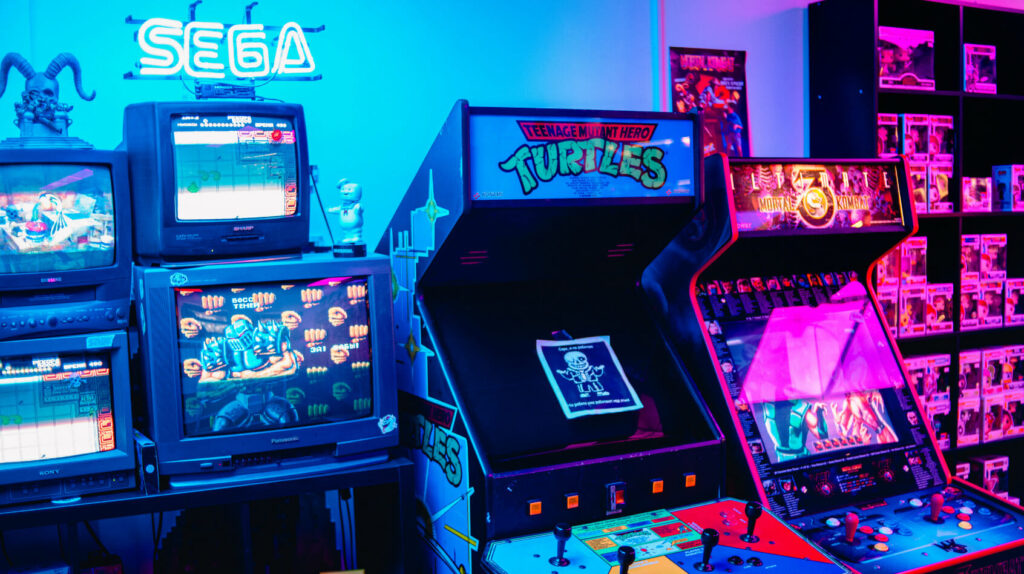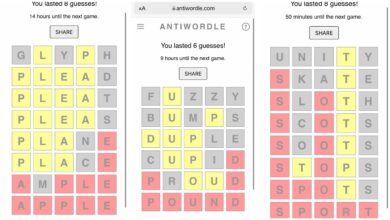Retro Ping Pong: The Ultimate Nostalgic Game Making a Huge Comeback

Retro Ping Pong something incredibly satisfying about the crisp sound of a paddle hitting a ping pong ball, especially when it echoes through a retro-styled arcade or basement rec room. It isn’t just a throwback—it’s a full-on revival. Whether it’s the charming simplicity of the gameplay, the vintage aesthetics, or the warm glow of nostalgia, it is capturing hearts and paddles across the world.
We’re not talking about your average table tennis match. Retro ping pong brings a unique blend of old-school vibes, classic equipment, and a sense of community that modern games often lack. From vintage tables and wooden paddles to pixelated digital versions and retro-themed tournaments, this movement is reintroducing a beloved game in a completely fresh, yet familiar way.
In this article, we’ll dive deep into the retro ping pong phenomenon, explore its roots, modern resurgence, gear, digital variations, and cultural relevance. Whether you’re a seasoned player or a total beginner, there’s something in this nostalgic revival for you.
The Origins of Ping Pong and How Retro Became Cool Again

Ping pong has come a long way since its humble beginnings in Victorian England. Originally played on dining room tables using cigar box lids as paddles and champagne corks as balls, it was a parlor game before it became a global sport. But when we talk about retro ping pong, we’re usually referring to the golden age between the mid-20th century and the early arcade era of the ’70s and ’80s.
What made ping pong retro in the first place was the boom of basement culture. Families in the suburbs had ping pong tables in their rec rooms, often set beside vintage couches, lava lamps, and shag carpets. Kids grew up swatting balls in neon-lit basements, and that memory stuck with them. As those kids grew up, they began to crave the simplicity and fun of those days, sparking a revival of retro ping pong in both physical and digital formats.
Nostalgia is powerful. Today’s retro ping pong trend isn’t just about playing a game—it’s about reconnecting with a time when life felt simpler. Whether you’re hosting a themed party, setting up a man cave, or designing a boutique barcade, retro ping pong sets the perfect tone for good vibes and great gameplay.
What Makes Retro Ping Pong Different from Modern Table Tennis?
Retro ping pong has a vibe. That’s the best way to describe it. While modern table tennis is sleek, fast-paced, and often highly competitive, retro ping pong focuses more on the experience. It’s not just about scoring points—it’s about enjoying the game in an old-school environment that makes you smile.
One key difference is the equipment. Retro ping pong paddles are usually made of solid wood, sometimes without the modern sponge layers that give pro paddles their spin. The tables might have a faded logo, slightly worn nets, and a story behind every scratch. And let’s not forget the iconic orange balls that were a staple in the ‘70s and ‘80s.
Then there’s the atmosphere. Retro ping pong games often happen in cool spaces—think basements with vintage posters, arcades with chiptune soundtracks, or outdoor setups that scream backyard barbecues. It’s casual, fun, and dripping with personality. It’s the kind of setting where no one’s keeping score, but everyone’s having a blast.
The Resurgence of Retro Ping Pong in Pop Culture
If you’ve noticed more ping pong scenes in movies, music videos, and even Instagram feeds, you’re not imagining things. Retro ping pong is enjoying a full-on cultural comeback. Indie bars and cafés are installing old-school tables. Fashion brands are launching lines with ping pong graphics. And celebrities are proudly posting clips of their backhand smashes on vintage tables.
This isn’t just a passing trend. Retro ping pong taps into a wider movement of nostalgia-driven hobbies. Just like vinyl records and Polaroid cameras made a comeback, ping pong is riding the wave of analog love. It’s tactile, engaging, and undeniably fun.
Shows like “Stranger Things” have subtly revived retro game culture, and ping pong fits right in. The mix of neon colors, 8-bit music, and vintage vibes has opened a new world of inspiration for creators, designers, and influencers. Suddenly, owning an old-school ping pong table isn’t just cool—it’s a statement.
Setting Up Your Own Retro Ping Pong Corner
You don’t need a mansion or a full arcade to enjoy retro ping pong. With just a little creativity and the right gear, you can set up a nostalgic ping pong zone right at home.
Start with the table. Look for a vintage or retro-style table online or at thrift stores. Don’t worry if it’s a little scuffed—imperfections add character. If you’re crafty, you can even restore an old table or give a modern one a vintage makeover with retro decals or a wooden trim.
Next, gather your paddles and balls. Aim for solid wood paddles with a minimalist design. Orange balls are a must for that true retro aesthetic. Add in a scoreboard, an old boombox for background music, and maybe a lava lamp or two. Voilà! You’ve created a retro ping pong haven that doubles as a social magnet.
The Role of Digital Retro Ping Pong Games
While the physical version holds strong nostalgic value, digital retro ping pong games deserve their own spotlight. The classic arcade game “Pong” from the ‘70s is essentially the godfather of all retro ping pong games. It was simple—two paddles, a pixel ball, and a black screen—but it changed everything.
Today, that pixelated magic lives on in modern games that pay homage to the original. Whether it’s browser-based pong clones, mobile apps with retro aesthetics, or full arcade cabinets restored for modern use, digital retro ping pong keeps the spirit alive.
Gamers and retro enthusiasts alike are drawn to these experiences not because of their graphics, but because of how they feel. The simplicity, the rhythm, and the satisfying sound effects make these games endlessly replayable. It’s the digital equivalent of comfort food.
Hosting a Retro Ping Pong Party: Tips and Ideas
Planning a retro ping pong party? You’re in for a treat. These gatherings are a hit with all age groups and make for a night full of laughs, competition, and vintage fun.
Start with the theme. Choose a decade—maybe the groovy ‘70s or the electric ‘80s—and decorate your space accordingly. Think neon signs, disco lights, vintage records, and classic video game soundtracks. Set up a dress code for guests to wear retro outfits, and don’t forget the themed snacks and drinks.
Your ping pong setup should be the star. Have paddles and balls ready, create a fun bracket or rotating match system, and consider giving out vintage-style prizes for the winners. You can even combine digital and physical play by setting up a retro console nearby with pong-style games.
Collecting Vintage Ping Pong Gear: A Hobby with Soul
For some enthusiasts, retro ping pong goes beyond the game—it’s a lifestyle and a collector’s dream. Vintage paddles, old-school scoreboards, limited-edition tables, and even signed gear from legends of the past are now hot collector’s items.
Scouring flea markets, estate sales, or online auctions can lead to some incredible finds. Whether it’s a paddle from the ‘60s or a rare tournament poster, every item adds to the richness of the retro ping pong world.
Collectors often enjoy displaying their gear in themed game rooms or using it in play. It’s not about pristine condition—it’s about stories. A scuffed paddle might have seen dozens of legendary basement battles. That history makes it special.
Retro Ping Pong in Education and Therapy
Beyond fun and nostalgia, retro ping pong has found a place in schools, rehab centers, and therapy programs. Its rhythmic nature, easy rules, and quick reflex action make it excellent for mental and physical development.
Teachers use it as a brain break activity, promoting hand-eye coordination and focus. Meanwhile, therapists have incorporated ping pong into rehab programs for motor skill development, especially with seniors or patients recovering from strokes.
When retro ping pong enters these spaces, it brings a sense of joy that modern gadgets sometimes lack. The sound of a ball bouncing, the focus of gameplay, and the sense of achievement after a rally—it’s all incredibly therapeutic.
The Social Power of Retro Ping Pong

One of the most beautiful things about retro ping pong is its power to bring people together. It’s inclusive, lighthearted, and universally enjoyable. No special skills needed—just a paddle, a ball, and a playful spirit.
Friends bond over casual matches, families reconnect across generations, and strangers become fast friends during barcade tournaments. It’s an icebreaker, a time machine, and a celebration of analog connection in a digital age.
From basements to beaches, ping pong continues to serve as a timeless game that breaks barriers and builds memories. When you add in the retro charm, it becomes more than a game—it becomes an experience.
Frequently Asked Questions About Retro Ping Pong
What is retro ping pong?
Retro ping pong refers to the classic style of table tennis that emphasizes old-school equipment, nostalgic settings, and often includes vintage digital versions like the original “Pong” game. It’s both a cultural trend and a lifestyle for enthusiasts who love the simplicity and charm of earlier ping pong eras.
How is retro ping pong different from regular ping pong?
The main difference is in the vibe. Retro ping pong is more about the experience, using wooden paddles, older tables, and focusing on fun rather than serious competition. It’s also associated with vintage aesthetics and environments like arcades and basements.
Where can I buy retro ping pong gear?
You can find retro ping pong gear on vintage marketplaces, specialty sports stores, online auctions, and even thrift shops. Look for solid wood paddles, classic orange balls, and older tables with character.
Can I play retro ping pong online?
Yes! There are many digital versions inspired by the classic “Pong” game. You’ll find apps, browser games, and console remakes that bring the retro ping pong feel to your screen.
Is retro ping pong good for kids?
Absolutely. It’s simple, safe, and incredibly engaging. Plus, it encourages physical activity, hand-eye coordination, and gives kids a taste of vintage fun in a world dominated by screens.
What makes a ping pong table retro?
A retro table often features woodgrain finishes, older logos, sturdy construction, and a certain patina of use. It might be from a previous decade or styled to look like it is. Retro doesn’t mean worn out—it means classic.
How do I host a retro ping pong tournament?
Pick a theme, decorate accordingly, get a vintage-style table, and use classic paddles and balls. Create a fun bracket or rotation system, offer retro-themed prizes, and keep the atmosphere light and energe Ping Pong.



